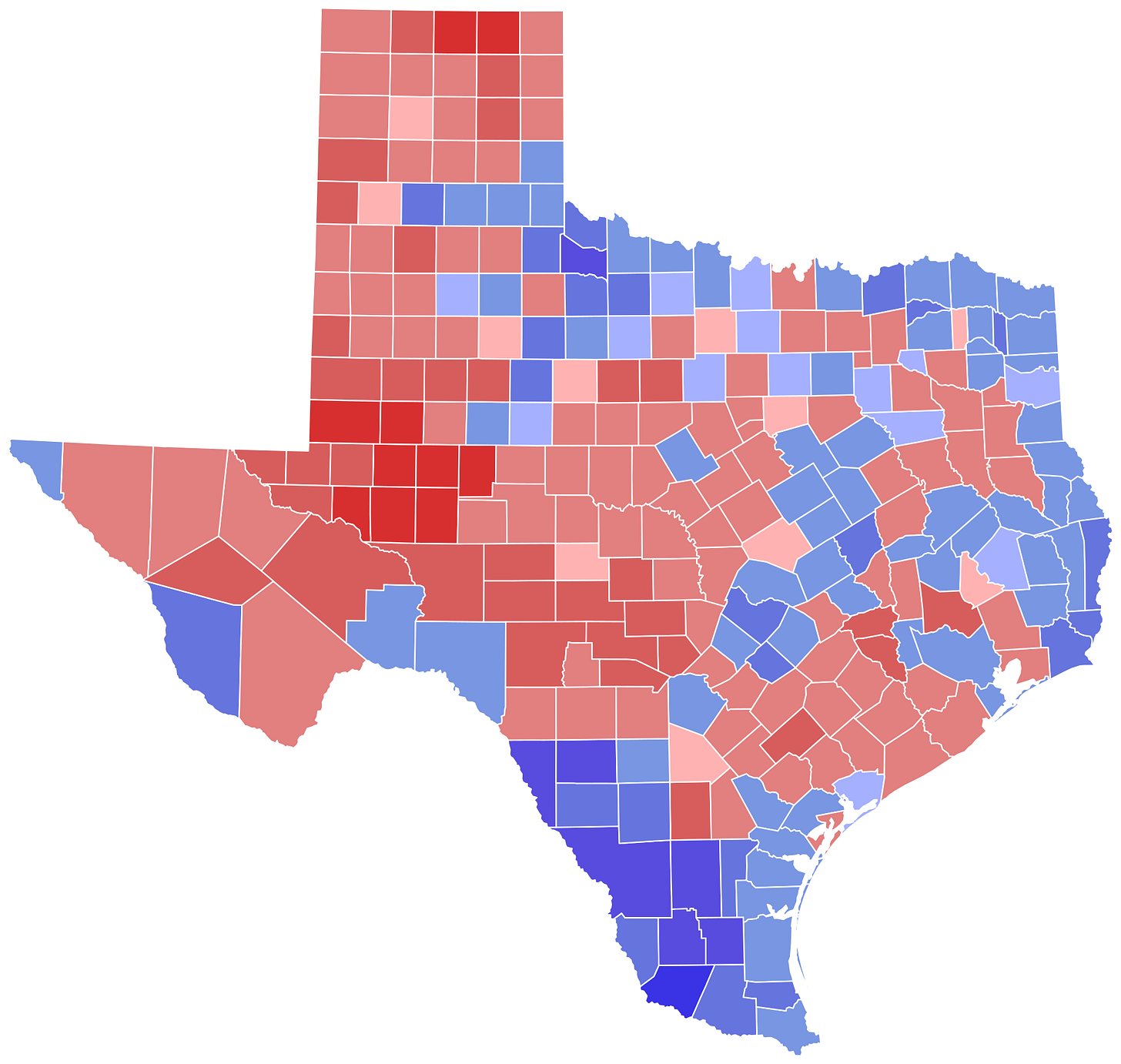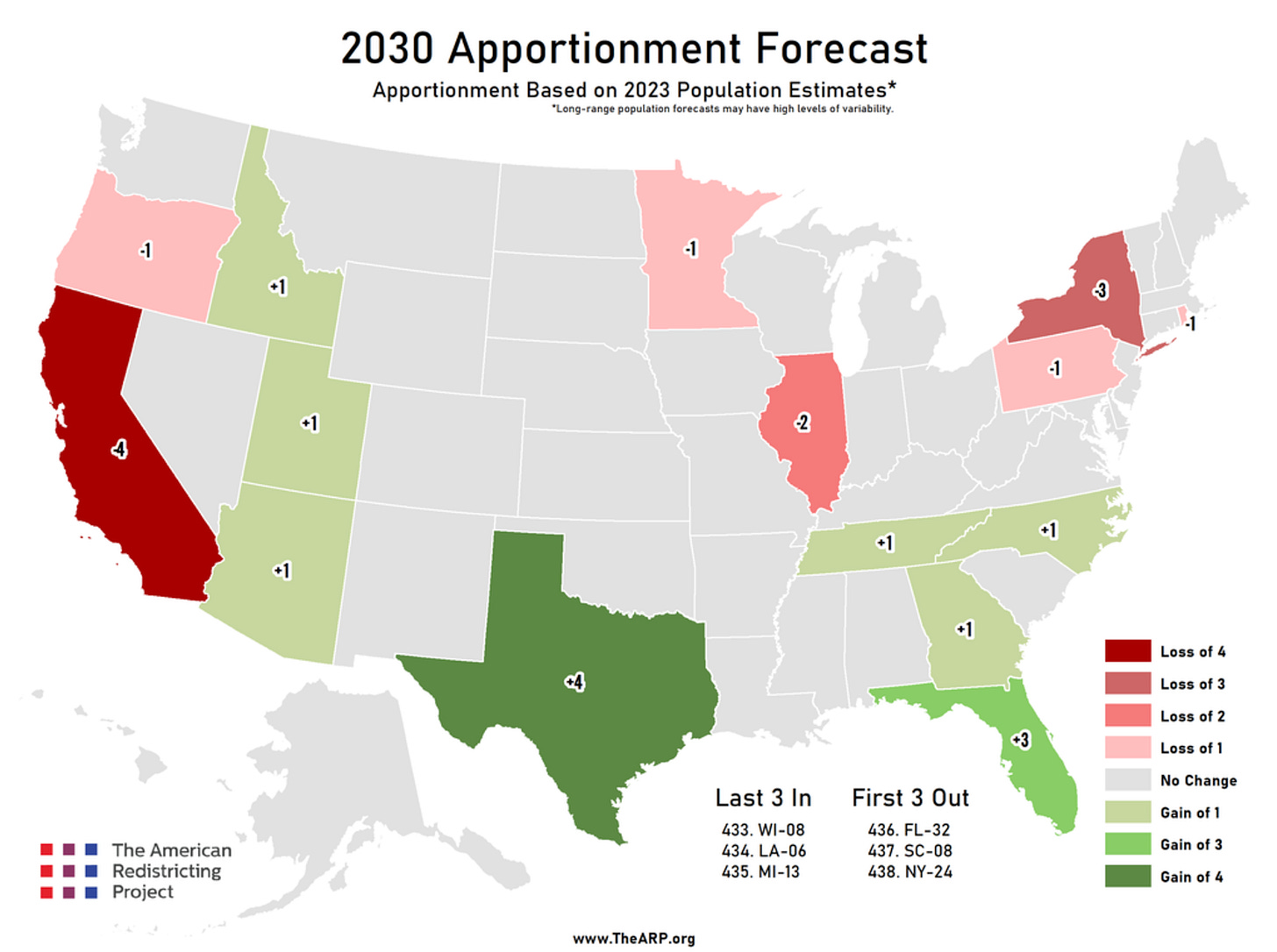The Path to 270 Runs through Texas
Okay, truthfully it doesn't yet. But it will in the future.
Ann Richards Electoral Map 1990
After 2020, I took a hard look at my life and reassessed everything. I had just finished a grueling stretch of campaigns between college semesters. I thought about the personal life I wanted to build and realized the path I was on wasn’t conducive to achieving it. I wanted stability—to live in one place for more than nine months. So, I made a list of places where I could envision settling down long-term. After months of consideration, I made a decision: I would move to Texas and commit to working to elect Democrats in the state for at least ten years.
Why Texas?
I chose Texas for several reasons, but at the top of the list was this simple truth: I believe Texas is the most important state for Democrats to secure a sustainable path to 270 electoral votes and a majority in the U.S. Senate.
After the brutal results in November, I questioned whether Texas is still the most critical state. While there are arguments to the contrary, I remain convinced. Here's why Texas remains pivotal for Democrats:
The Future Electoral College Map
The Path to a Senate Majority
Key Issues in Texas
This post isn’t about how Democrats can win Texas—that’s a complex and multifaceted question. Anyone claiming to have the answer should be met with more skepticism than you’d give a late-night taco truck off 6th Street.
What I will do is spend the next year exploring ideas that could move us in the right direction. Topics like building infrastructure, identifying and persuading undecided voters, and crafting messages and policies to mobilize support and more. If you're interested in these topics and how to run smarter, more strategic campaigns, subscribe to my Substack for more.
The Path to the White House
As I mentioned, I came to Texas with the plan to stay for at least 10 years. For those doing the math, that means until the 2032 cycle. That’s why my arguments aren’t focused on the next cycle or even the one after that. My arguments focus on the future.
In 2030, the electoral math for Democrats is projected to get much more difficult. That’s because the American Redistricting Project is forecasting significant shifts in the electoral college math.
Yes, you’re reading that right. Texas is forecasted to gain 4 electoral votes, while California is expected to lose 4 and New York 3. The math doesn’t look good across the rest of the country either. Just how bad is it? Let’s take a closer look—
The total change in electoral votes for Democrats is projected to be -24. If you assume Georgia and Arizona are swing states and use the 2020 results as a baseline, Democrats would have 252 electoral college votes. That means that winning the Blue Wall states (MI, WI and PA) won’t be enough in 2032. Democrats will need to win both Georgia and Arizona to hit 270.
That is a terribly thin margin, especially for states that only became competitive a few cycles ago. States like Missouri, Iowa, Ohio, and Florida are seemingly out of reach or at least trending red. That leaves North Carolina and Texas as the next competitive states for Democrats to flip on the path to the White House.
The Path to 51 Senate Seats
As Nate Silver points out, the path to 50 seats in the Senate by 2028 runs through Maine, North Carolina (twice), and Wisconsin. That is, if Democrats win the presidency and secure the tie-breaking vote of the Vice President. Winning the presidency in 2028 is definitely not guaranteed. Let’s take a closer look at these races:
Senate Seats to Flip
Maine: Senator Susan Collins is up for re-election in Maine. In 2020, she defeated her Democratic opponent by 8.6%. In a midterm election defeating a popular incumbent who won by that margin is a big hill to climb. Democrats need to run a good candidate and work to win this seat, but given the current variables at play it seems unlikely.
North Carolina: Democrats have struggled to win federal races here despite success at the gubernatorial and down-ballot levels. 2026 offers some promise under the leadership of Anderson Clayton at the NC Democratic Party. However, North Carolina will still be tough, especially back to back years in 2026 and 2028.
Wisconsin: This was a razor-thin race in 2022, decided by just 27,000 votes. It’s a complete toss-up but could swing toward Democrats in a wave year.
Senate Seats to Hold
Winning three out of four of the races above and the Presidency in 2028 is going to be challenging enough, but Democrats will also need to hold some competitive seats.
In 2026, Democrats will need to hold Michigan, Georgia, Virginia, New Jersey, New Hampshire and Minnesota. In 2028, Democrats will need to hold Pennsylvania, Georgia, Arizona, Nevada and New Hampshire. In total that is 6 elections in states Trump won in 2024. Some of these states may sound easier to win, but Harris only won New Hampshire by 2.8%, Minnesota by 4.2%, Virginia by 5.2% and New Jersey by 5.9%.
Stretch Senate Races
Okay, now that we’ve examined the competitive seats we can flip and need to hold onto lets look at what I am calling the “stretch senate races”. These are races we don’t have much recent victories but there are signs we could.
2026 - Iowa, Kansas, Alaska, Kentucky, Texas and Ohio (Special election)
2028 - Florida, Kentucky, Kansas and Alaska
Those aren’t the best options and thinking beyond just 2028 those options don’t have much sign they’ll get any easier for Senate Democrats. That leads to Texas being the one stretch state that has a continued to improve year-to-year the last decade.
Luke Warford, Agave Democratic Infrastructure fund
Key Issues and National Attention
Texas frequents national news coverage for issues happening in the state. This cycle two of the top campaign issues were heavily central to things happening in Texas; abortion and immigration. Both Harris and Trump made Texas important parts of their campaigns, not for its electoral college votes, but for these issues being nationalized.
My family and I at the Harris rally in Houston just 11 days before the 2024 General Election.
Harris made an unprecedented move in coming to Texas to host a campaign Rally centered on reproductive freedom. The rally had a host of Doctor surrogates and mothers who have faced horrific challenges to their access to healthcare. Seemingly, the reason Harris chose to come to Houston was that the state continues to make national headlines after three women have now died under Texas’ Abortion ban.
Trump held his first campaign rally for 2024 in Waco, TX and on the same day as Harris visited Austin to record a podcast episode with Joe Rogan. When in Texas Trump campaigned heavily on immigration and the border. Trump’s team cut an ad featuring the mother of Jocelyn Nungaray, whose accused murderers entered the country illegally.
While immigration and abortion stayed in the spotlight this campaign cycle there are numerous other issues that frequent national news coming out of Texas. Those issues range in scope and impact. Here is a non-comprehensive list; flooding and hurricanes, energy sector, workers rights, state take-over of local school districts, access to healthcare and failure to expand medicare, voting rights and access to voting, location of Space X and NASA and attack on Trans community from the Republican legislature. Again, this is not a comprehensive list, but my point is Texas makes and can make national headlines non-stop.
Texas is often ground zero for the issues driving campaigns. Since Texas often helps drive the national conversation it needs to have competitive campaigns and be a priority for national Democrats. We need effective communicators who can tell our side of the story in Texas.
Final Note
In the face of daunting challenges, Texas remains a beacon of possibility for Democrats seeking long-term viability on the national stage. The numbers paint a stark picture: the electoral math will only grow tougher, and the Senate map remains an uphill battle. Yet, Texas offers a rare and critical opportunity. Its growing population, shifting demographics, and ability to drive national conversations on key issues make it an indispensable battleground—not just for winning elections, but for shaping the future of the Democratic Party.
While the path to flipping Texas is complex and uncertain, the stakes could not be higher. By committing to building sustainable infrastructure, amplifying messages that resonate, and engaging voters on the ground year-round, Democrats can transform Texas into a cornerstone of their national strategy. This is not a sprint; it’s a marathon that will require bold ideas, steadfast determination, and an unwavering belief in the power of grassroots efforts to drive change.
If Democrats want to secure a brighter future for their party and the country, Texas is not a choice—it’s a necessity. It’s time to think beyond immediate cycles and focus on building the foundation for success in the decades to come. I’m committed to this fight, and I hope you’ll join me in exploring how we can turn Texas blue.
Do you have a topic you think needs to be explored or want me to write about? Drop it in the comments below.
Subscribe to get more articles like this one. The next few pieces will start exploring how we can flip Texas.








We need to fight for democracy and the rule of law
How could we elect someone who believes himself above the law and has been allowed to get away with it? We need democracy back before it is too late.